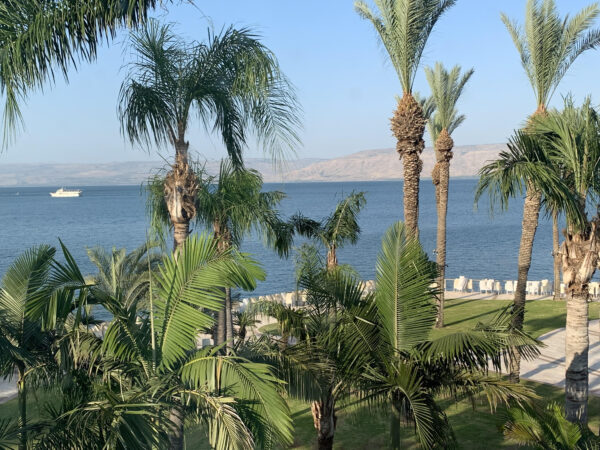
We landed in Tel Aviv in the morning, prepared to see what countless pilgrims before us have seen. There are many things to see, of course. Tel Aviv is right next to old Joppa, where Peter saw the vision of the unclean animals in the sheet, and where Jonah made his famous run for it.
Before landing, I suspected that the great blessing for me would be a sense of spatial arrangements, and not so much the terrain on the ground. A number of the biblical sites are thirty feet underground, and so it is not strictly speaking quite accurate always to say that we are “walking where Jesus walked.”
But the mountains are pretty much what Jesus saw, as well as the Sea of Galilee occupying more or less the same space. The Jordan river still runs north to south, although at a much smaller volume. But then again, whenever any of us look at the moon, at any point in our lives, we are seeing what Jesus saw also. So what is special about this place?
It turned out that gaining a sense of the spatial topography really was one of the great benefits. On the one hand, the Valley of Jezreel, seen from the top of Mt. Carmel, was as broad and as spacious as you might expect. You might be more familiar with that place as the site for Armageddon, and there was room for armies down there. On the other hand, the Kidron Valley, separating the Mount of Olives from Jerusalem was kind of a shock. Our bus drove us to the top of the Mount of Olives, and we walked down to the bottom in about twenty minutes. It was steep but doable, whereas getting down to the Valley of Jezreel would have been more of a production, taking up a good chunk of a day.
Another thing—the land is crammed with significant places, sprawling across millennia, and you can’t swing a cat without hitting one. In the middle of our time here, while driving from Nazareth to Jericho, our wonderful guide—Baruch—was saying, rapid fire, things like “on the left you see the place where Elijah healed the son of the Shunammite woman, on the right is Gilboa, where Saul and Jonathan died,” and thus he continued.
Some of the sites are the result of educated guesswork, along with some dependence on the educated guesswork of pilgrims in the Byzantine era. If there ever was a favorite occupation of the Byzantines, it was building churches to commemorate every other Bible story. The oddest was the one marking the cave where Lot’s daughters committed incest with him. Okay, I guess.
Speaking of educated guesses, I am thinking of places like the traditional site where Jesus was preparing breakfast over a coal fire on the beach, the time when He restored Peter. But the synagogue at Capernaum, which was the center of the Lord’s Galilean ministry, a stone’s throw from the foundation walls of Peter’s house, is remarkably well attested. So maybe.
And others are simply slam dunk identified. The foundation of Jeroboam’s golden calf altar at Dan is . . . still right there where they left it.
Another site that was way cool was the Valley of Elah, where David slew Goliath. The Israelite ridge was on one side, with a creek bed along the bottom of it, and the Philistine ridge was across the way. I brought home a small rock from that creek bed. Not many people realize this, but I picked up the one that had been right next to the one that David picked up. One has a sense about such things.
You didn’t ask for it, but here are just a few snapshots. Comments are open.
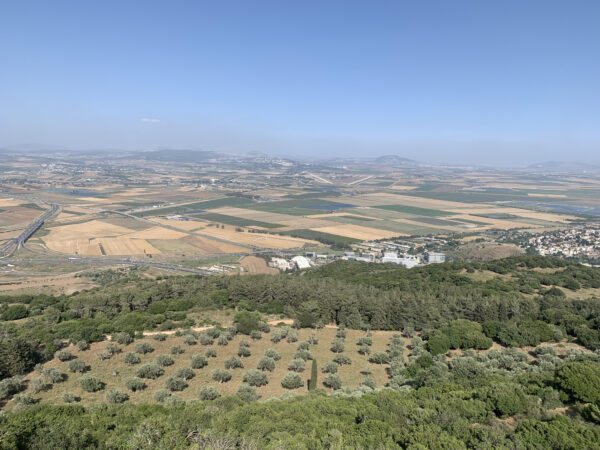
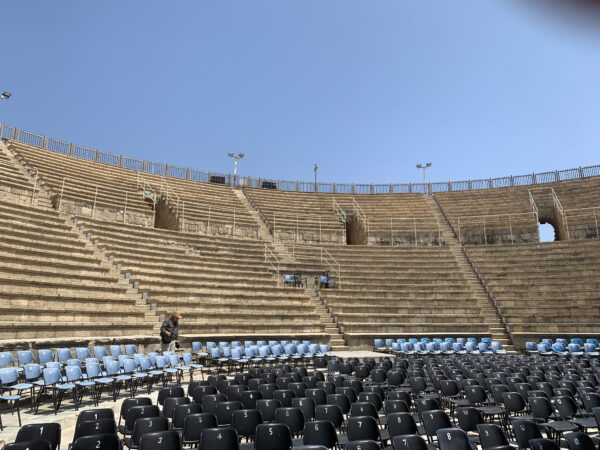
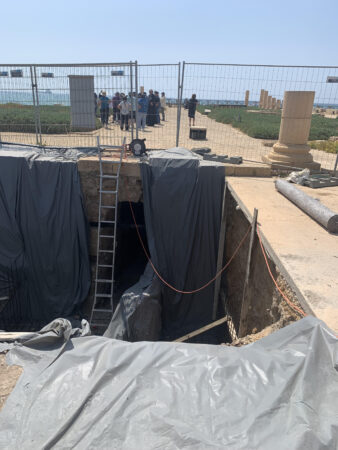
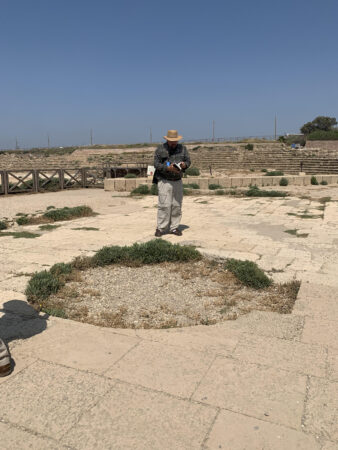
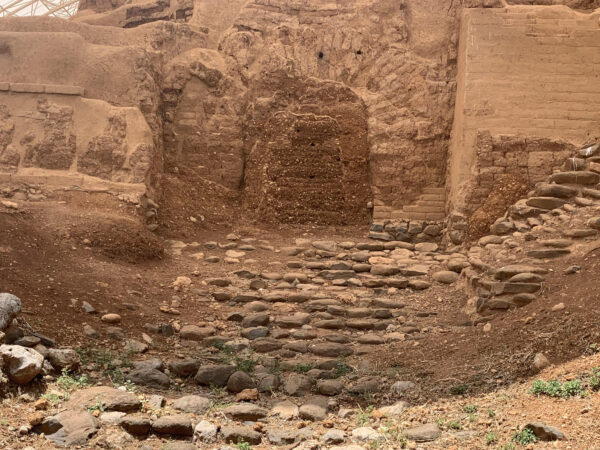

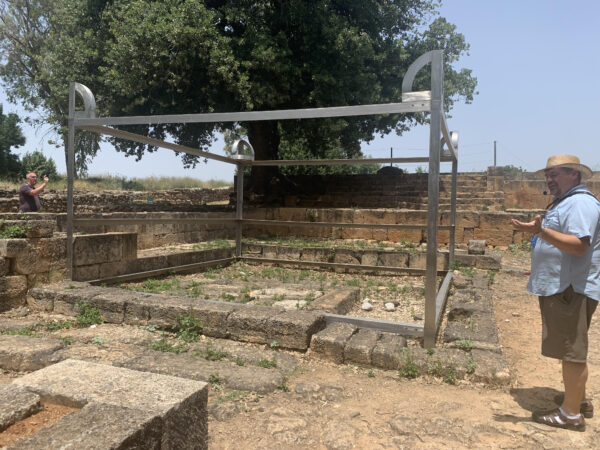


Wow this would be great to see. Love the gate of Hades! Wonderful to be reminded of that great truth that the gospel topples those kinds of gates. (And I’m not postmill)
I woulda grabbed a rock from that creek bed, too! Maybe five smooth ones. One can never be too precise about these sorts of things. What a heaping dose of perspective a trip like that provides! Glad you could take it. It’s always puzzled me how all these ancient ruins, from Egypt to Dan seem to have been buried beneath twenty feet of dirt and rock. I wonder if anyone has any historical (or even Biblical) explanations for why stuff is buried up like that. Pompeii I understand. But Paul’s prison? What happened…? Thanks for sharing those pics. Hope to… Read more »
Wonderful. Thanks for sharing a bit about your trip with us. I hope you are feeling refreshed and ready to continue your labors in the Lord. May God bless you and strengthen you for all He has called you to.
Beautiful places. I hope to make a similar pilgrimage, Lord willing. I will pray that God blesses you on this trip.
Can we now refer to you as Pastor Hajji? Glad to see y’all having a good time. Thanks for the update.
I would have thought the Valley of Jezreel would look more like Bryce Canyon due to the drought from the lack of rain.
Great to hear from you, pastor Wilson.
Happy for you that are able to do this monumental thing you wanted to do and that it is such a big blessing and educational and edifying.
God bless you and yours on your travels and may you have a safe trip home.
It looks very interesting and something that I would like to be able to take my family to do.
Thanks for the update! I would love to take my family and visit these sites.
Nice. Thanks. Peace. Safe travels.
Doug, this brings back fresh memories from this past February when my wife and I hit many of the sites you mentioned above. The altar at Dan was the moment “it got real” for both of us as we read from 1 Kings and then looked up to see the exact spot we were reading about. Sounds cliche but it really made the Bible “come to life”. Also immensely helpful to understand the geography of the region for Bible study. Glad you had a great trip!
Thanks much for the summary of the trip ( I think we all love to hear more)—along with the great pics with captions.
Definitely a bucket list trip!
My wife and I went to Israel on our honeymoon, and while it was memorable, the overwhelming impression we both got was of a mercenary religiosity; spirituality is big business there… and it shows.
Always has been, hasn’t it, for those motivated by such. Moneylenders in the temple and such. The silversmiths of Ephesus. The young lady Paul cast a spirit out of, to the chagrin of her handlers. Could go on.
Have enjoyed the privilege of two past trips to Israel, with a third in prospect late next year. With all the necessary caveats, it’s still an experience to be sought out, especially with a good guide.
Yes, the compactness of it all. It was transformative. Where did I get the idea that things were further apart? I picked up a couple pieces of Herodian era pottery from a utility dig hole in a parking lot at Cesarea Maritima. We were there for a couple weeks in late February of 2020, so you all know what we came home to. At Ben Gurion Airport on the way out, I commented to my wife, “Look honey. There’s someone wearing a mask.” One person wearing a mask. Two weeks later I was travelling a near empty I-75 like Charleton… Read more »
Some day, Lord willing.
So has Heiser’s take on Caesarea Philippi convinced you that “upon this rock” has a meaning that repudiates Rome’s interpretation while in fact being a metaphorical stick in Satan’s eye?
Did you get to see the excavations in downtown Nazareth? When I was there many years ago, they were excavating what they believed to be the town center of ancient Roman Nazareth, dating back to Jesus’ day. They had posited it as such due to the number of boreholes they found for wells, which they surmised would have amounted to the town “square” or gathering place as everyone went to draw water. It is one of the few places where it is likely that Jesus walked those very paths. Another site was the Western Wall…I made sure I ran my… Read more »
I went to Israel 20 years ago and learned the same: the topography is important context for the text. There are dozens of examples, like the gates of Hades at Caesarea Philippi. See Ethelbert Stauffer’s Christ and the Caesars for more like it.